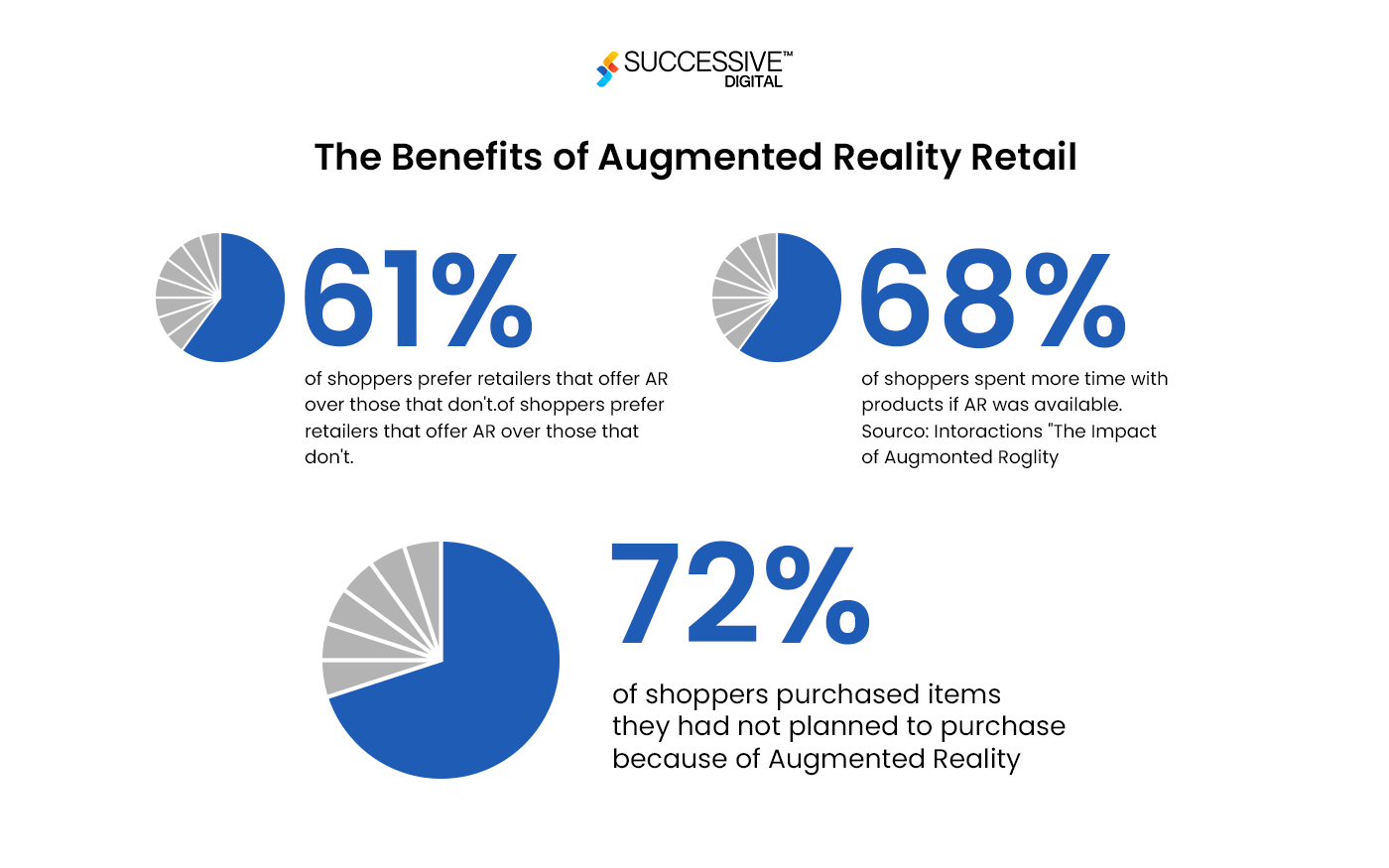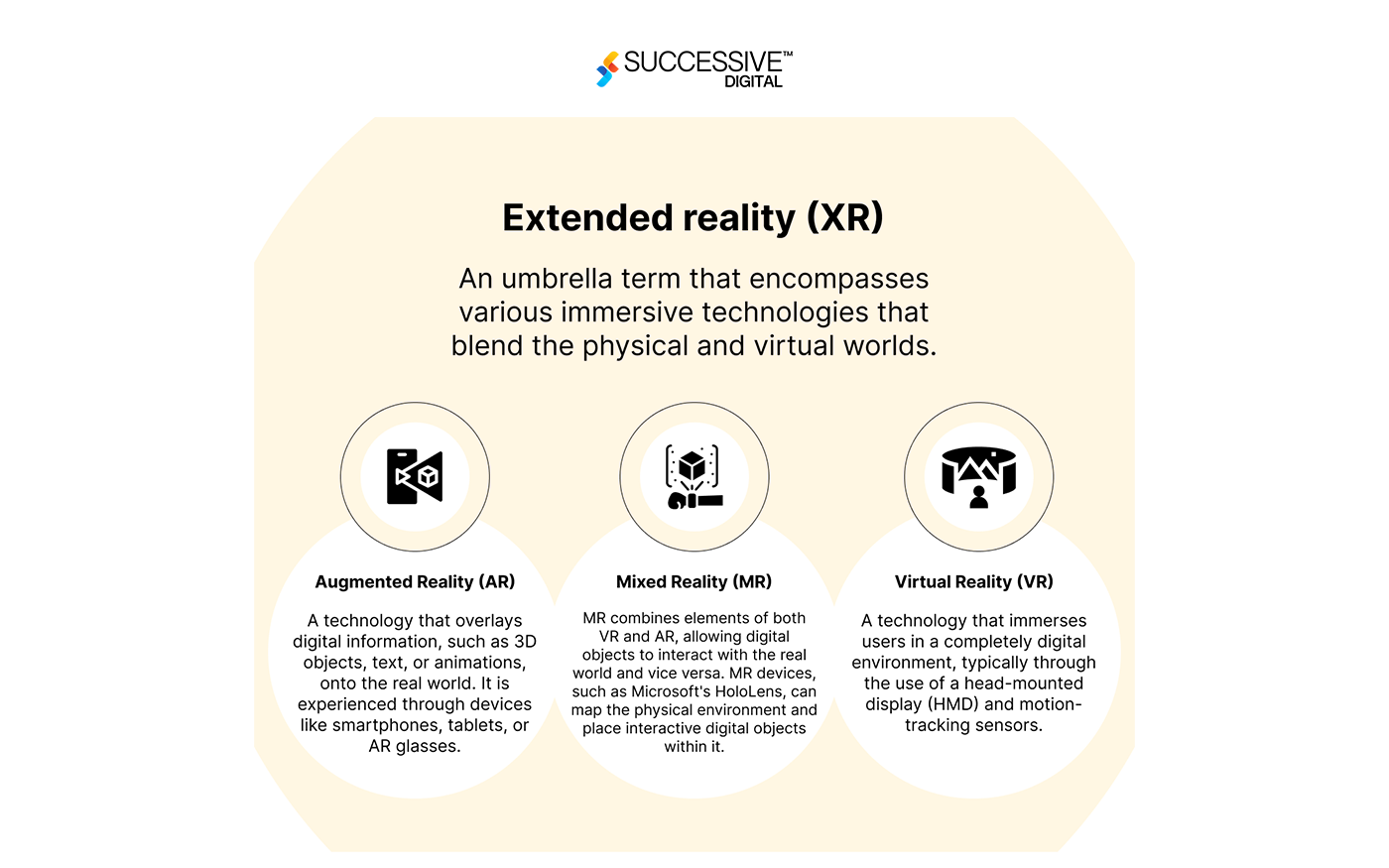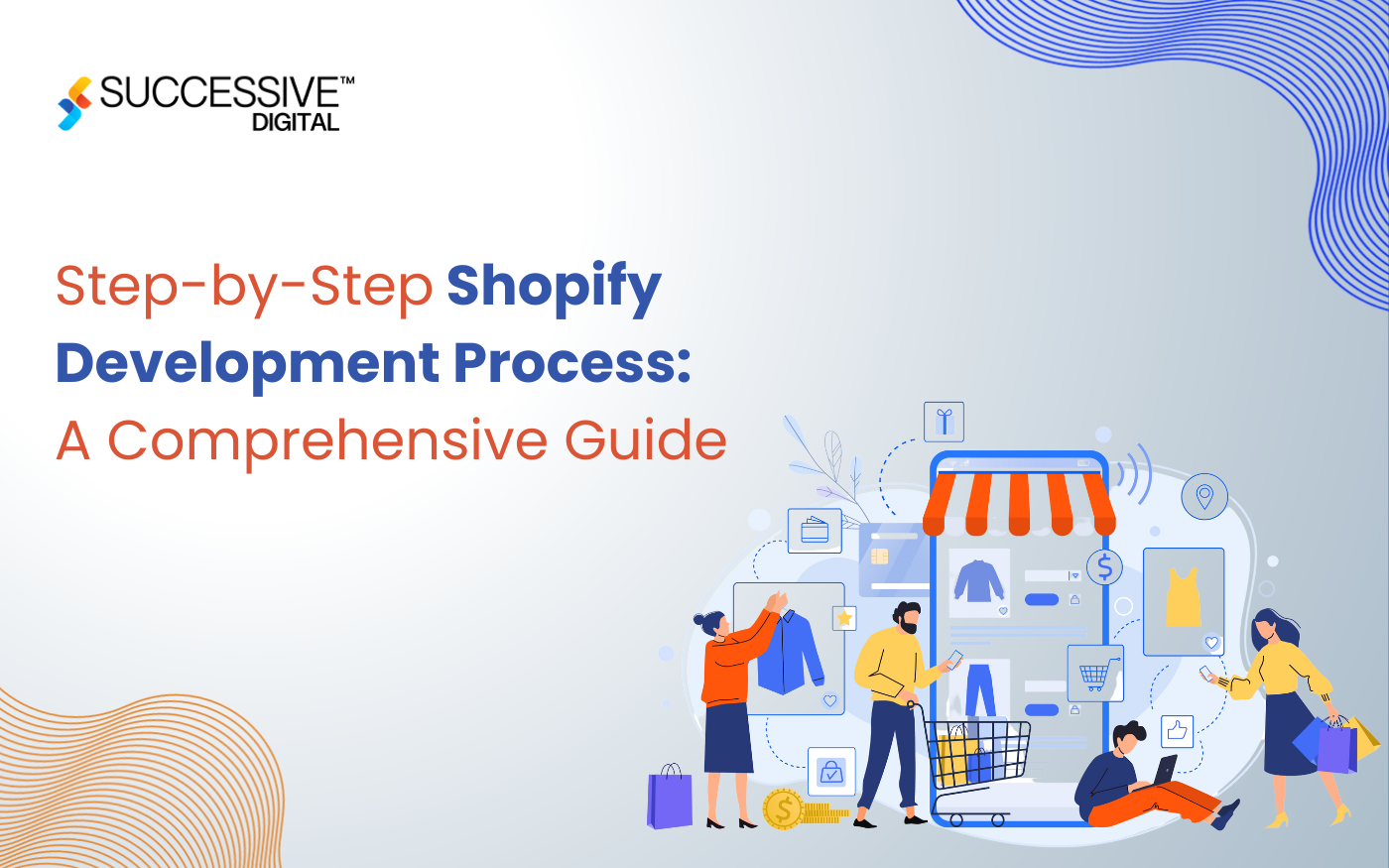In an ever-changing retail landscape, immersive technology has catalyzed a revolutionary shift. Modern technologies, particularly augmented reality (AR) and virtual reality (VR), are reshaping how consumers engage with products and brands. This blog explores the dynamic development of retail in the age of digital advancements and highlights its future predictions.
From the early days of e-commerce to the modern era of AR and VR technologies, we see how these innovations are not just changing the consumers engagement channels but redefining the essence of the shopping experience.
Through example, this blog will dissect digital retail and interactive store design to provide a comprehensive analysis of the impact on consumer engagement and unlock the complexities of tailored shopping journeys, personalization, gamified experiences, and the vital role of virtual shopping assistance.
Evolution of Retail with Immersive Technologies:
The Rise of E-commerce:
The initial wave of the business transformation in retail got an upward push from the rise of the global e-commerce sector. Online shopping provides great convenience to customers, letting them browse and purchase from the comfort of their homes. But this shift got more prominence with use of immersive experiences at the traditional brick-and-mortar outlets.
Integrating AR and VR:

Realizing the limitations of a simple online shopping experience, stores have turned to AR and VR technologies to bridge the gap between the physical and the real world. Augmented reality, the ability to overlay digital information worldwide, and virtual reality, which can augment fully simulated environments, opened up new possibilities for engaging and immersive shopping experiences.
Virtual Try-ons and Interactive Store Layouts:
-
Virtual Try-ons:
The integration of AR in virtual try-ons has changed how consumers interact with fashion brands online. Companies like Warby Parker adopted the AR technology by allowing virtual try-ons of eyeglasses. Customers can see what iconic images appear in front of them in real time through mobile apps or AR-enabled glasses in physical stores. Similarly, the IKEA AR app allows users to see the actual furniture in their homes before making a purchase, increasing the experience and convenience of online shopping.
-
Interactive Store Layouts:
Brick and mortar stores are leveraging VR technology more than ever. For instance, home improvement giant Lowe’s uses VR to help customers plan maintenance projects. With VR headsets, customers can virtually go through specific layouts in their homes, experiment with different designs, and visualize the placement of things like fixtures and appliances. This approach not only makes it easier to choose and design at its best but also transforms the in-store experience into a personalized and immersive digital retail experience.
Consumer Engagement through Immersive Experiences
Personalized Shopping Journeys:
Immersive technology redefined the personalized shopping experience, offering consumers customized, interactive journeys. AR and VR algorithms analyze customer information in detail and depth, analyzing previous purchases, browsing history, and choices.
For instance, in fashion industry, augmented data lets buyers try on clothes, experiment with colors, and more options in real time. The records collected from these virtual activities contribute to the development of a sophisticated understating of possible behavioral patterns, enabling stores to maintain personalized recommendations to match the unique tastes of each customer.
Additionally, VR-powered personalized shopping experiences promise a better future of digital retail. With this technology, a virtual environment can mirror a boutique or luxury showroom and tailor the shopping experience to specific buyer segments.
For instance, a high-end fashion retailer can use VR to create a digital storefront, offering personalized recommendations and exclusive previews for their premium clientele. This customized system increases customer interest and more engaged conversations with the brand. It also creates powerful and lasting emotional connections.
Gamification of Shopping:
Gamification in retail innovation is a powerful way to attract and retain the customers’ interest. Retailers increasingly turn to AR and VR technologies to bring interactive and gaming features to the shopping experience. For example, AR-powered scavenger hunts or interactive displays can turn a typical shopping trip into an adventure.
Brands are using AR driven games to encourage and incentivize customers. Users can participate in gamified activities to unlock exclusive discounts, digital rewards, or exclusive merchandise. This approach only targets new customers but also infuses an element of excitement and exploration into the retail journey, making it more memorable and shareable on social media platforms.
Virtual Shopping Assistants:
AI-powered digital shopping assistants are becoming essential partners for immersive shopping. Integrated within the VR environments, such assistants offer real-time operations and support, similar to shopping advisors in a store.
For instance, a virtual assistant can provide clothing size cues, suggest accessories explicitly based on the customer’s preferences, or even offer fashion advice through an AR overlay.
This virtual support not only facilitates choosing the most efficient product but also increases overall shopping happiness. Virtual shopping assistants use machine learning to constantly adapt to individual choices, ensuring that recommendations are more accurate and in line with the customer’s changing tastes. This seamless combination of AI and digital retail transforms the shopping journey into a collaborative system, creating trust and loyalty between customers and brands.
Virtual Brand Experiences:
Immersive experiences extend overall brand loyalty and create a better brand ecosystem. VR allows retailers to create digital retail engagement channels, taking shoppers into well-designed virtual environments that mimic the brand’s ethos and values .
For instance, a sportswear brand using VR creates a digital school camp, putting users in an interactive environment to explore sports products, engage in fitness challenges, and interact with online coaches.
This immersive approach transcends traditional advertising marketing strategies, allowing consumers to participate in the brand narrative actively. The emotional resonance of these virtual experiences elevates in-depth engagement with the brand, an effective tool for building brand appeal and trust.
The Future of Retail and E-commerce
-
Enhanced Virtual Shopping Events:
Digital retail will become the norm every day, especially in response to the global development of retail technology that incorporates cross-border purchasing convenience. Brands will use VR to create immersive virtual pop-up shops, live demonstrations, and product launches. Customers can participate in special events from the comfort of their homes, making them feel unique and special even in the tough competitive retail space.
-
Sustainable Shopping Initiatives:
As consumers become more environmentally conscious, immersive technology will help in sustainable purchasing activities. Virtual try-on and online interactions will reduce the need for physical store visits. AR and VR can also educate consumers about sustainable practices, making sustainable choices more accessible and appealing.
-
AI-driven Hyper-Personalization:
The development of AI algorithms will create hyper-personalized shopping experiences. Retailers use AI to analyze accurate customer information and precisely predict their choices and behaviors without physically interacting with them. This will result in better and personalized product recommendations, customized content, and focused advertising and marketing strategies, ensuring that every interaction with the brand is tailored to the individual customer.
-
Extended Reality Integration (XR):

The emergence of immersive shopping experiences through AR and VR technologies is significantly improving the global retail space. From virtual try-ons that bring physical merchandise to virtual world to interactive store layouts that redefine in-store experiences, retailers are using these technologies to create increased customer engagement.
As the technology becomes more viable and available, the predictions points to the continued integration of digital and physical space, hyper-personalization through AI, and the continuous improvement of immersive technology to create a more technologically driven retail landscape with convenient, quality, personalized, sustainable retail innovation. The digital age is also set to bring more new technologies to retail, with customization and interactive learning at the forefront of the customer journey.












